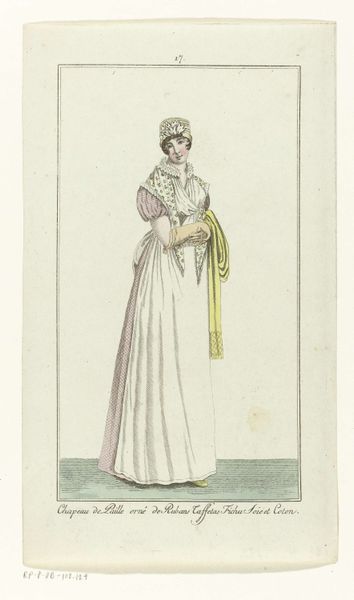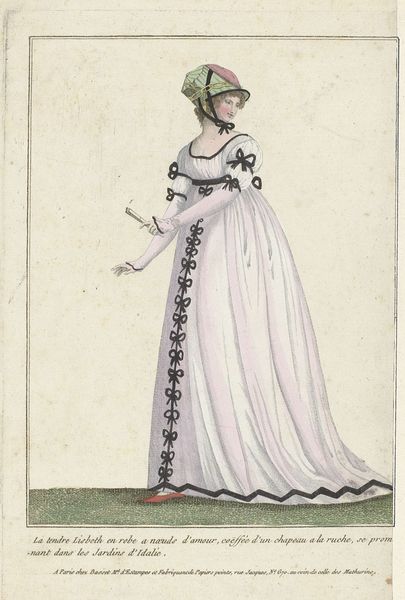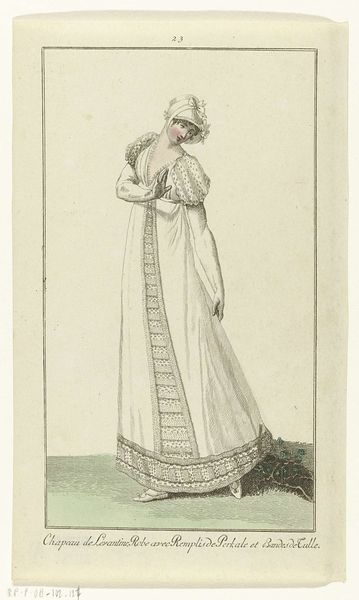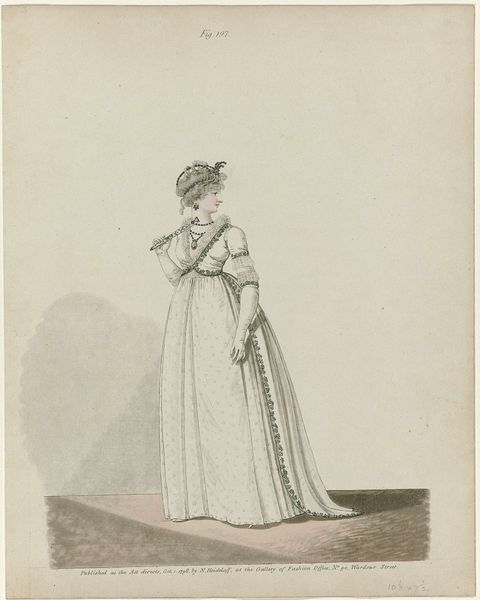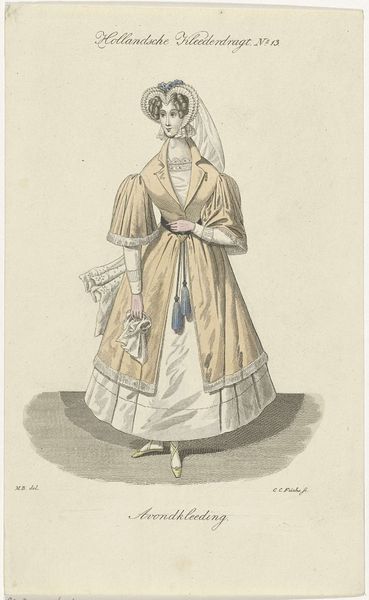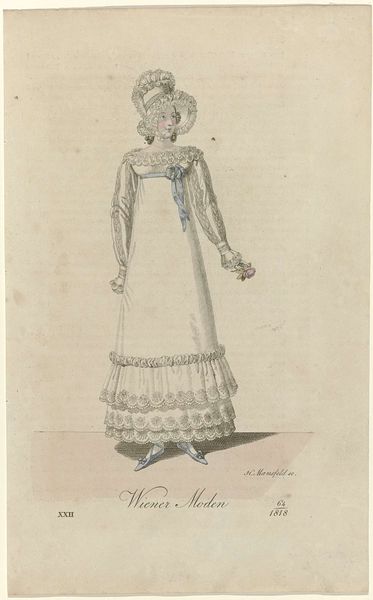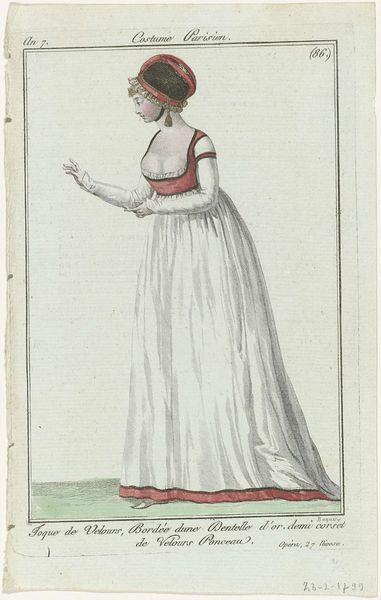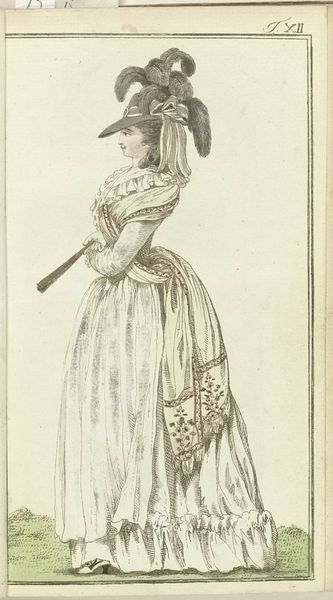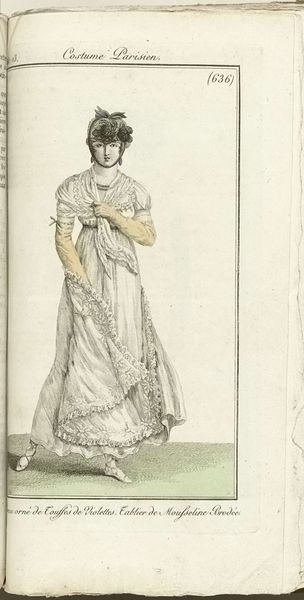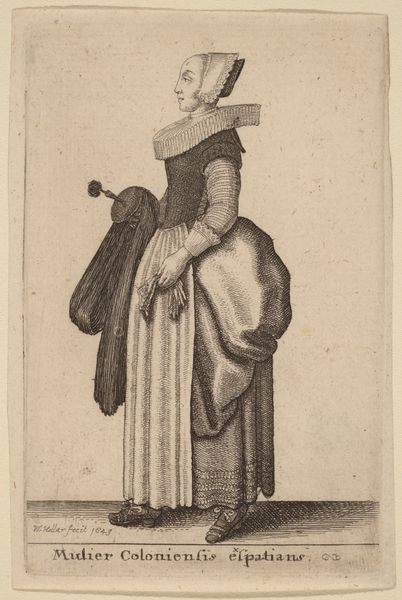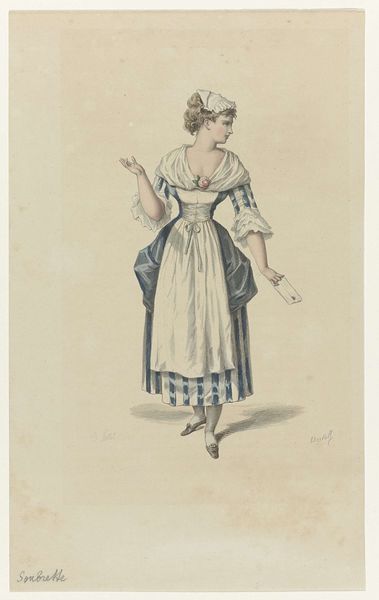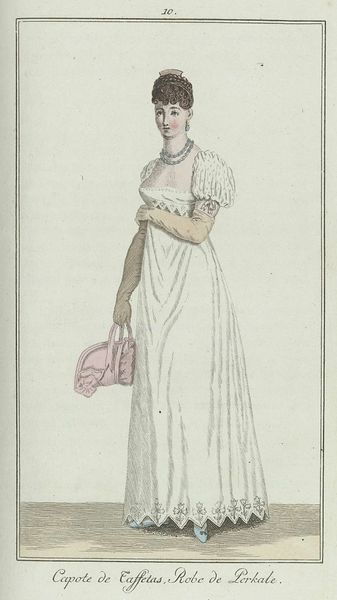
Elegantia, of tijdschrift van mode, luxe en smaak voor dames, September 1807, No. 21 : Chapeau orné d'une Plume folette... 1807
0:00
0:00
drawing, painting, watercolor
#
portrait
#
drawing
#
neoclacissism
#
painting
#
figuration
#
watercolor
#
historical fashion
#
romanticism
#
watercolour illustration
#
history-painting
#
dress
#
watercolor
Dimensions: height 179 mm, width 108 mm
Copyright: Rijks Museum: Open Domain
Curator: This watercolor and ink drawing, titled "Elegantia, of tijdschrift van mode, luxe en smaak voor dames", dates to 1807, and is currently held in the Rijksmuseum's collection. The piece offers us a glimpse into the world of fashion and high society in the early 19th century. Editor: Immediately, the elongated elegance strikes me. It's so very delicate, almost ephemeral. The dress, with its high waist and simple lines, it looks deceptively simple, doesn’t it? Curator: It’s neoclassical in its simplicity, referencing classical Greek and Roman aesthetics, certainly. The Empire silhouette emphasized a natural form. But it also spoke to the societal shift away from the extravagance associated with the aristocracy, toward a more "republican" ideal, while ironically sustaining exclusivity based on wealth and class. This fashion was a direct expression of new ideals. Editor: Let’s talk materials then. Watercolors were accessible. Fashion plates like these democratized fashion, to an extent, disseminating style beyond the court. But the illusion of simplicity hides the intensive labor needed. From the production of textiles to the meticulous detail of lace and embroidery, the seemingly effortless design depended on a whole supply chain. Curator: Precisely, that "effortlessness" becomes part of the commodity itself, obscuring the often exploitative labour conditions of women workers in particular. The woman depicted isn’t merely wearing a dress, she embodies a complex matrix of social and economic hierarchies. Her clothing marks her status. Editor: How the watercolour behaves on paper tells a tale of social value, doesn’t it? Think of cotton production at the time - and where that was emerging from. The materials point directly to the supply chains enabling access. Curator: And it is about control. Consider the power dynamics involved: the artist (anonymous in this case) capturing a moment of fashion, the patron who acquires the print, and even us, today, interpreting its historical and social significance. Each viewer comes with a perspective, influenced by our own situated experience and sociopolitical context. Editor: Looking again, beyond the immediate allure of the garment, I can see now the echoes of all that labour. Thank you, this fashion plate holds far more depth. Curator: The exercise illuminates what can happen when the language of line meets the narratives of identity. It all changes how we see these materials, doesn’t it?
Comments
No comments
Be the first to comment and join the conversation on the ultimate creative platform.
